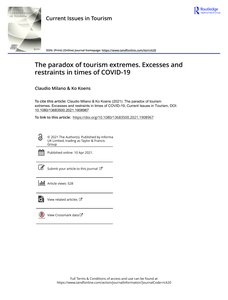Abstract: Climate change is related with weather extremes, which may cause damages to infrastructure used by freight transport services. Heavy rainfall may lead to flooding and damage to railway lines, roads and inland waterways. Extreme drought may lead to extremely low water levels, which prevent safe navigation by inland barges. Wet and dry periods may alternate, leaving little time to repair damages. In some Western and Middle-European countries, barges have a large share in freight transport. If a main waterway is out of service, then alternatives are called for. Volume- and price-wise, trucking is not a viable alternative. Could railways be that alternative? The paper was written after the unusually long dry summer period in Europe in 2022. It deals with the question: If the Rhine, a major European waterway becomes locally inaccessible, could railways (temporarily) play a larger role in freight transport? It is a continuation of our earlier research. It contains a case study, the data of which was fed into a simulation model. The model deals with technical details like service specification route length, energy consumption and emissions. The study points to interesting rail services to keep Europe’s freight on the move. Their realization may be complex especially in terms of logistics and infrastructure, but is there an alternative?
MULTIFILE

In this study, Dutch and Australian planning regimes are examined to determine whether they are ready to face climate extremes. Five different “cultural” facets of spatial planning determine the differences between the two regimes. These planning characteristics are first confronted with current climate change. The Dutch planning regime performs better under these conditions than the Australian. Secondly, a suite of spatial scenarios is confronted with both current change and a changed risk landscape, in which climate extremes are introduced. Again, the performance of planning characteristics to deal with these new vulnerabilities is tested. For type-1 impacts, exaggerating current change, a limited number of Dutch planning characteristics still hold, where the majority of Australian planning properties is likely to lose functionality. Under type-2 impacts, surprising climate events, the Dutch approach is no longer sufficient, while some Australian characteristics suddenly imply opportunities. The sectored planning approach, together with culturally determined individual responses, might prove to offer solace, under the condition that dealing with extreme events is made priority. Overall, current regimes face difficulties in dealing with surprising climate events and a fundamentally different planning approach is required. Swarm Planning, which dynamically deals with uncertainty, is proposed as a beneficial new planning method.
DOCUMENT
This paper seeks to highlight underlying issues of the tourism system that have led to tourism extremes of too much or too little tourism. Five phases are recognized that reflect different ways of dealing with too much tourism over time, after which the impact of a sudden lack of tourism is investigated in light of future renewal processes. This discussion highlights the remarkable capacity of the tourism industry to adjust to rapidly changing circumstances and crises, even when these cause anguish to individuals and within societies at large. The paper thus seeks to contextualize the current discussions regarding the transformation of tourism post COVID-19. It highlights the complexity of changing a tourism that multiple stakeholders depend on or have grown accustomed to. To come to a more balanced tourism, it is necessary to not only come up with alternative visions and strategies, but also to engage with the political economy nature of tourism development. A future research agenda should therefore also discuss facets of entangled power, social exclusion, inequalities and class differences to come to new reference points of what actually constitutes a more inclusive tourism success.
MULTIFILE

Centre of Expertise, onderdeel van Hogeschool van Amsterdam
